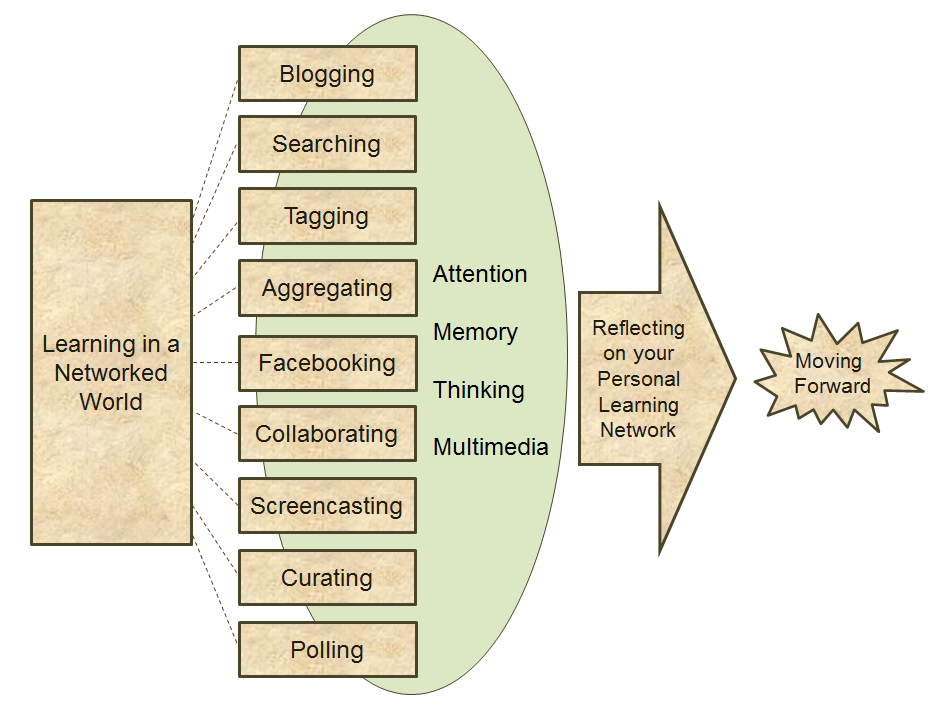 Ever developed one of those killer assignments that you know would be dynamite … and then you review the graduate student submissions and wonder – How could they have missed that!?!?
Ever developed one of those killer assignments that you know would be dynamite … and then you review the graduate student submissions and wonder – How could they have missed that!?!?
Yep! It happened to me this week. It happened ironically during a synthesis assignment on attention, memory and thinking, and it pointed out to me (again) how critical being explicit is in online learning (or any learning).
Let me provide some context.
For the past four weeks, my EDU 6323 class on Technology as a Medium for Learning has been reading the chapters on attention, memory and thinking in Michelle Miller’s Minds Online: Teaching Effectively With Technology. I had previously blogged about her chapters last year – see my posts on Attention, Memory, and Thinking. These chapters provided background as we explored digital tools for tagging, aggregating, social networking, and collaborating.
During those same four weeks, the students began using a group page in Diigo, purposefully curating resources around the topics of attention, memory and thinking. They collectively shared over ninety articles, both from scholarly sources as well as mainstream media. See below for some examples.
The assignment this week:
Over the past weeks, we have explored a number of Web 2.0 technologies (and we have a few to go).
We have also been reading Miller’s book Minds Online. Chapters 4-6 focus on key cognitive attributes of attention, memory and thinking. Also, we have been collectively gathering web resources on these topics in our Diigo Group page.
During this week, you will submit a 2-5 page double-spaced paper, synthesizing the lessons you take from these chapters and resources, and discussing specific ways some of the technologies we have discussed could be used to improve your teaching and student learning. You will bring highlights of your thinking into this week’s discussion to share with your classmates. The focus this week is on “collaboration” – so let’s learn from each other!
I thought it self-evident that the “collectively gathered web resources” in Diigo would inform their papers. But that was not explicitedly stated in the assignment nor the rubric.
One student did, weaving in to his analysis three different articles that other classmates had saved in Diigo. Four others used one or two of their own resources that they had added to the Diigo group page, but none from their classmates. Half of the class had Miller’s book as their only resource, with no mention of the curated resources.
I place the “blame” (if that is the right word) squarely on my shoulders. I did not make my expectations explicit and I did not provide enough scaffolding. For the past three weeks, I have reminded students to pay attention to Miller’s chapters, as they would be using them as a lens for their upcoming paper. In doing so, I focused their attention strictly on the book…and failed to highlight the importance of the other sources they were dutifully collecting.
In general, the papers were fine. They summarized Miller’s key points and then discussed possible applications to their own teaching situations. I just assumed that they would connect the dots between (1) the activity of gathering resources on attention, memory, and thinking and (2) the paper they were writing on applying the lessons to their own teaching situation. That connection was crystal clear to me … but alluded 93% of my class.
My fault!
This is my first time teaching EDU 6323. Next time, I will spend more time connecting the dots – and making explicit my expectations.
And just to share some of the good work the class did curating resources, here is a sampling:
- Attention
- Memory
- Thinking
I would welcome any suggestions you might have on making lessons more explicit. Maybe I watch too much NCIS – but a head slap is what I feel I need right now!
{Graphics: Chris Sabo, Watwood EDU6323 Course Graphic, Patricia Goldbach}

